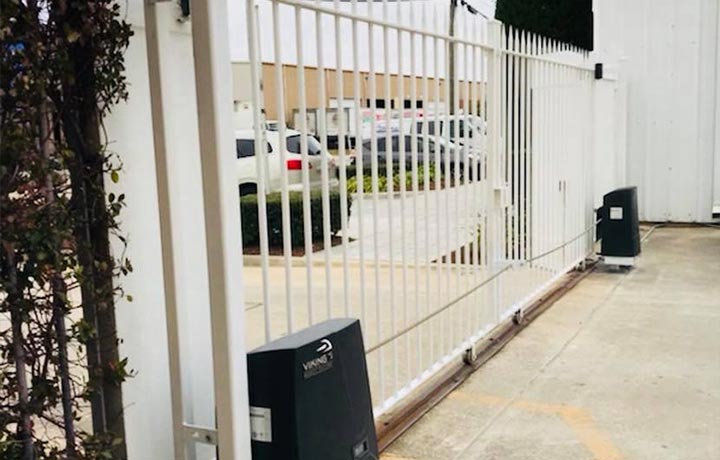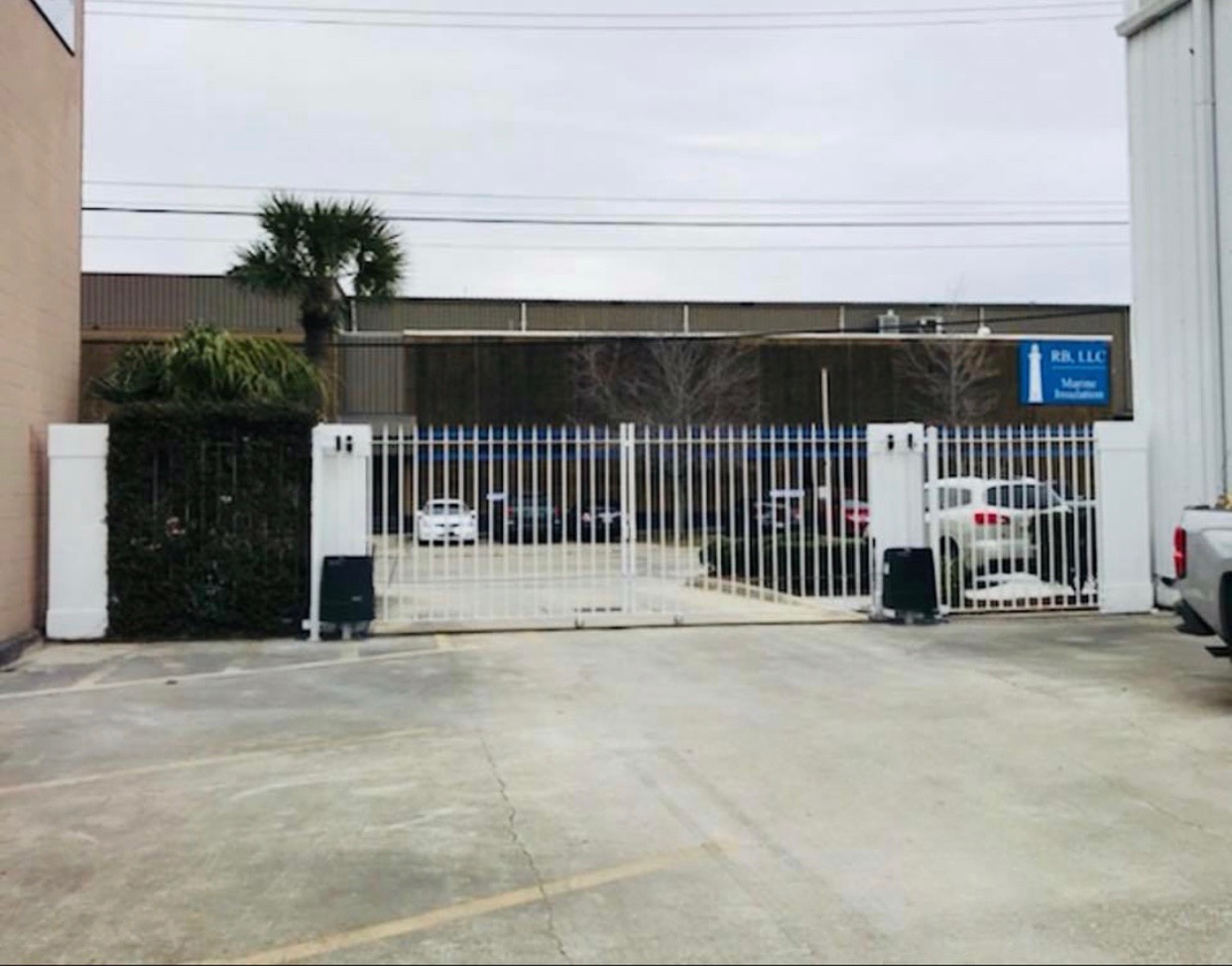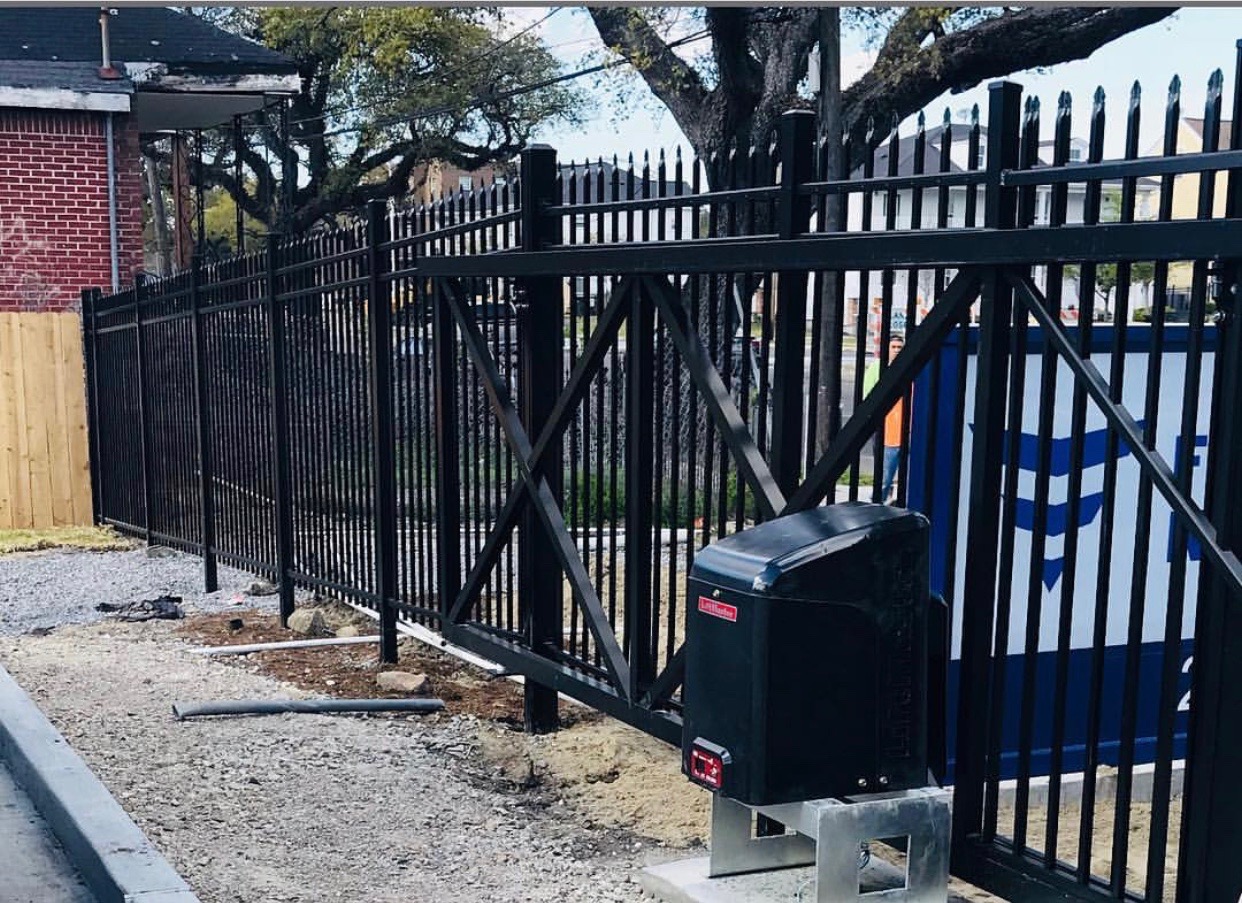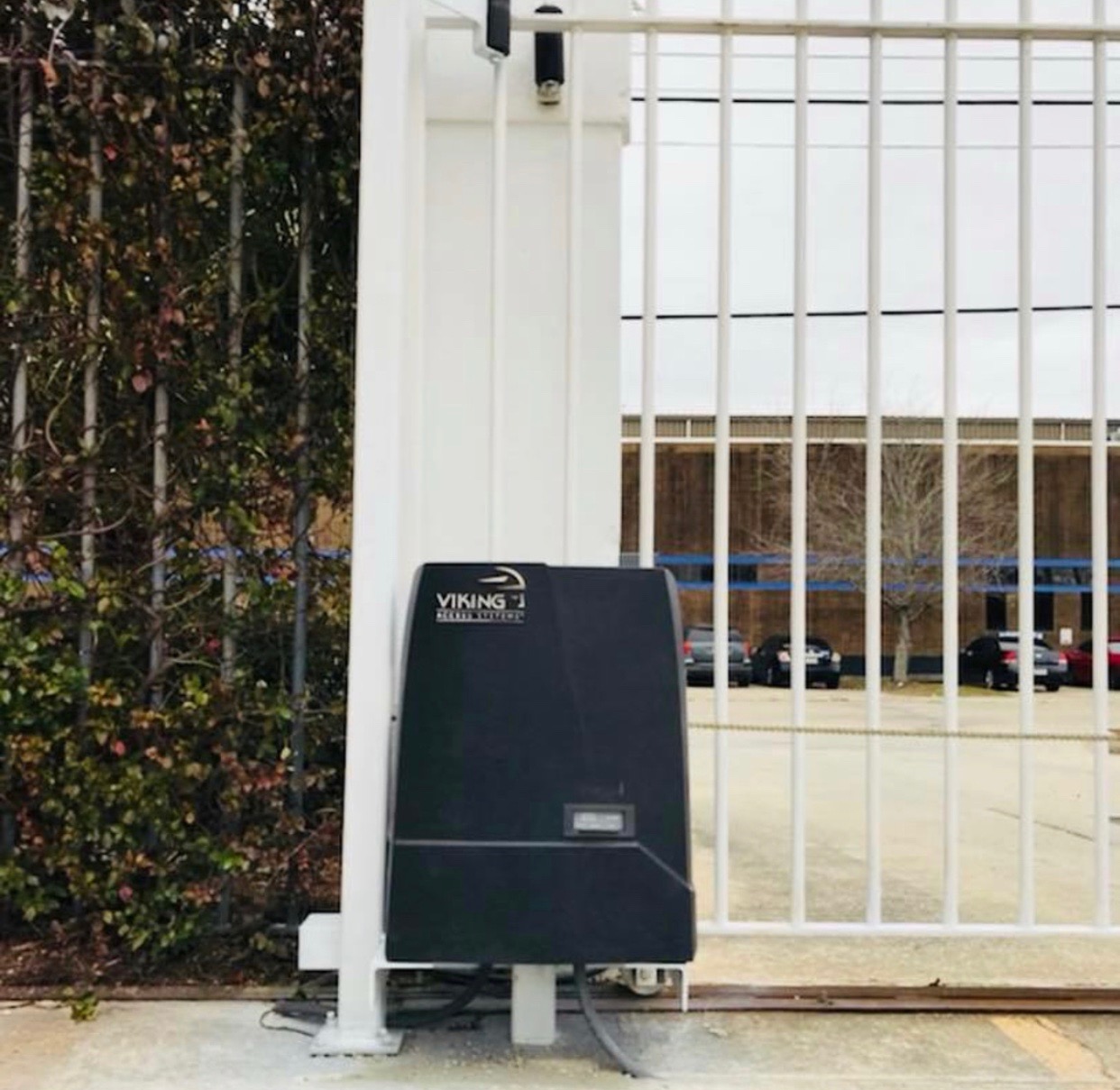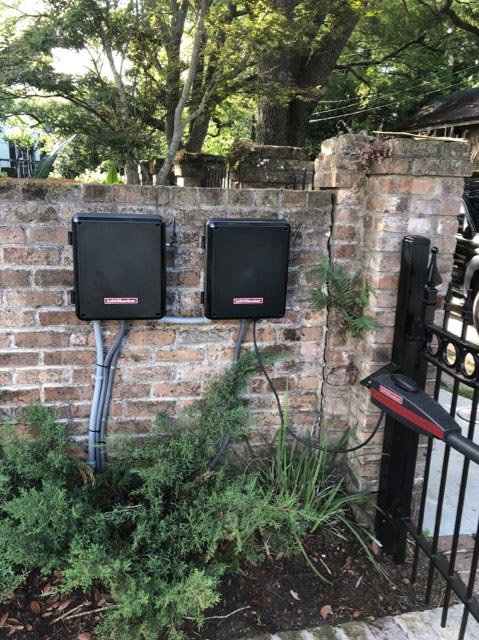Considerations When Choosing an Automatic Gate
Opening size:
The overall size of the opening will be a major determining factor in deciding what type of automatic gate to use. In general, the wider the gate opening, the more expensive it will be to install a gate. While gate widths of over 80′ are possible, gate widths over 40′ tend to be more expensive and more problematic.
Availability of Space:
the amount of space available on all sides surrounding the gate can limit the type of automatic gate that can be used. If the facility is located on a large rural site that has plenty of space, probably just about any type of automatic gate can be used. Facilities located in crowded urban or downtown areas where space is at a premium may be limited to only one or two options for automatic gates.
Weight of gate:
The overall weight of the gate determines the type and grade of gate operator required. In general, the wider and taller the gate, the more it will weigh. Gates of the same size will weigh differently depending on whether they are constructed of steel, aluminum or wood. Allowance must also be made for any increase in weight that may be caused by accumulations of rain, snow, or ice on the gate surfaces.
Opening and Closing Speed:
Different applications require different opening and closing speeds. While slow opening speeds can be acceptable in residential and some commercial applications, they are totally unacceptable in high-volume industrial applications such as at a distribution center or airport. Opening speeds that are too slow can cause traffic backups and user frustration. Closing speeds that are too slow can encourage “tailgating” and other security violations.
Duty Cycle:
The number of times the gate will be opened and closed each day must be considered when selecting an automatic gate operator. Certain types of gate operators designed for residential use may only be intended to be cycled a dozen times per day or less. These types of gate operators will fail quickly in an industrial environment where the gate is cycled hundreds of times per hour on a 24 per hour per day, 365 day a year basis.
Grade:
Most gate operators are designed to operate gates that are on a level, flat grade. Gates that must open or close going up or down an incline can cause excessive wear on the gate operator and lead to premature failure.
Gate Construction:
Simply adding a gate operator to a gate that was originally designed for manual operation can be a real mistake. Gates need to be specifically designed for automatic operation. Special types of rollers, bearings and other hardware are often needed to make a gate work reliably with an automatic gate operator. These items add relatively little cost to the overall installation, but make a big difference in gate performance and reliability.
Weather Conditions:
Special precautions must be taken when installing gates in regions where there are extreme hot or cold temperatures, high winds, or heavy snow or ice.
Location:
The type of neighborhood where the automatic gate is being installed must be considered when specifying a gate. In general, gates being installed near residential areas(where children are likely to be present) require more stringent safety measures than gates being installed in purely industrial environments.
Electrical Power:
While some light-duty gate operators will work with standard 110/120 VAC electrical power, most medium and heavy-duty gate operators will require 220/240 VAC or three-phase electrical power. It can sometimes be difficult and costly to get this type of power to the place where the gate will be installed.


